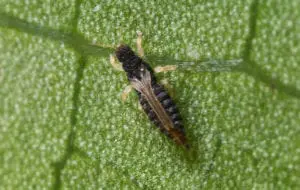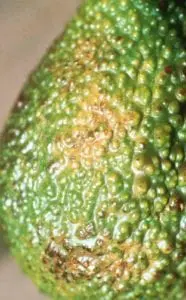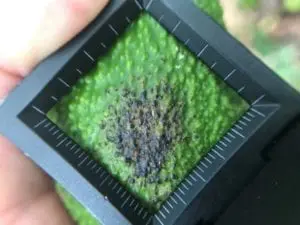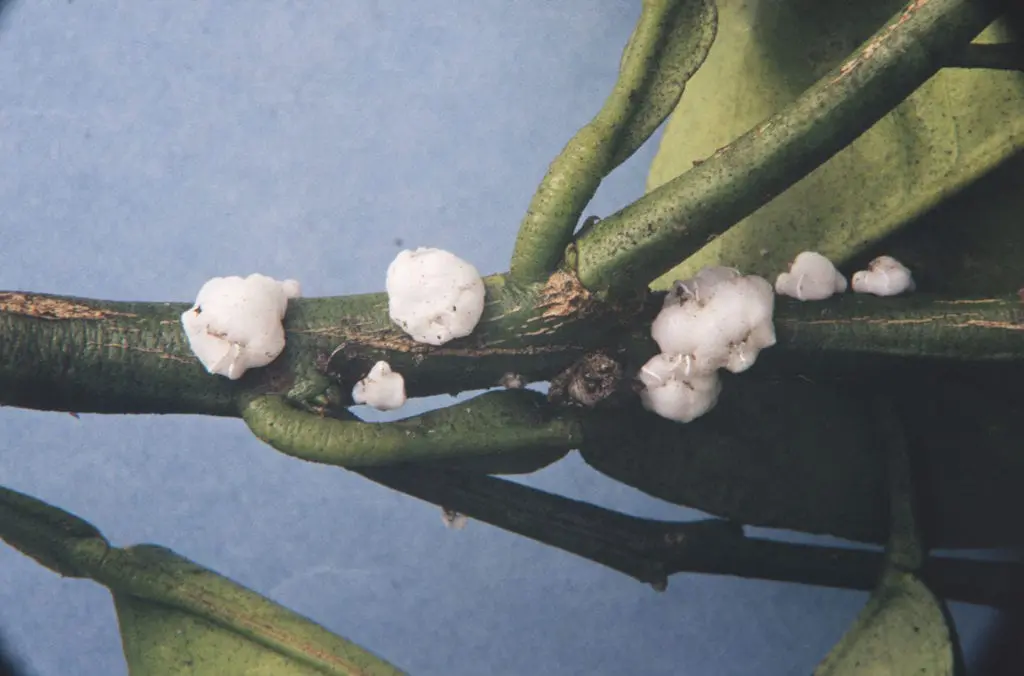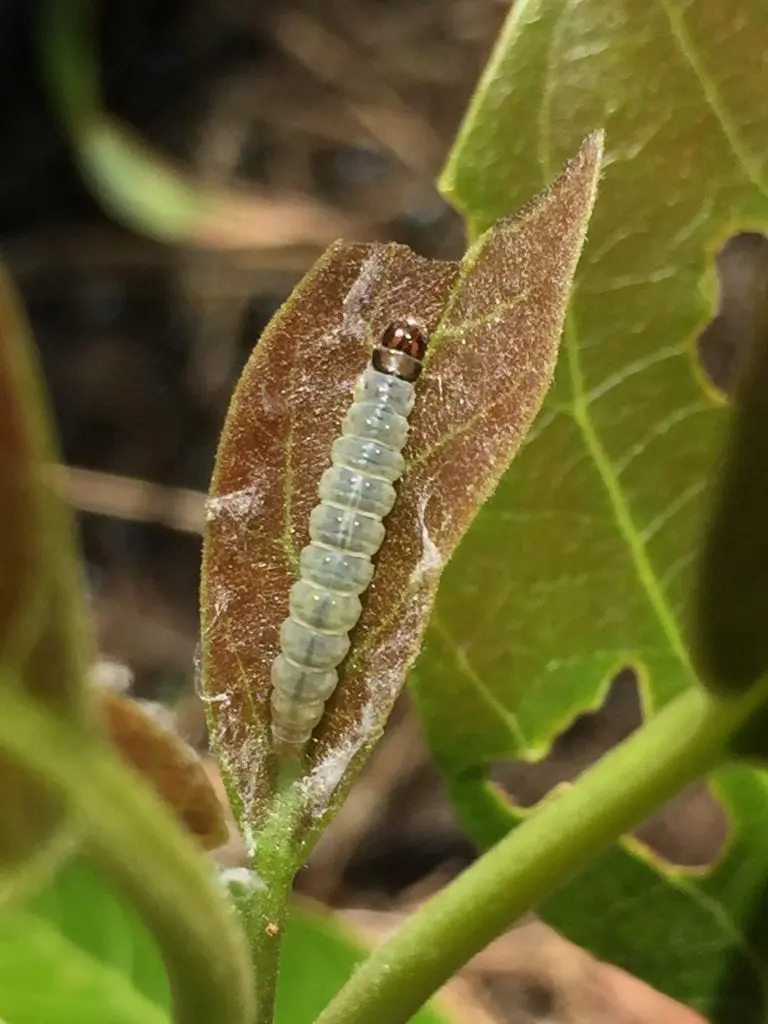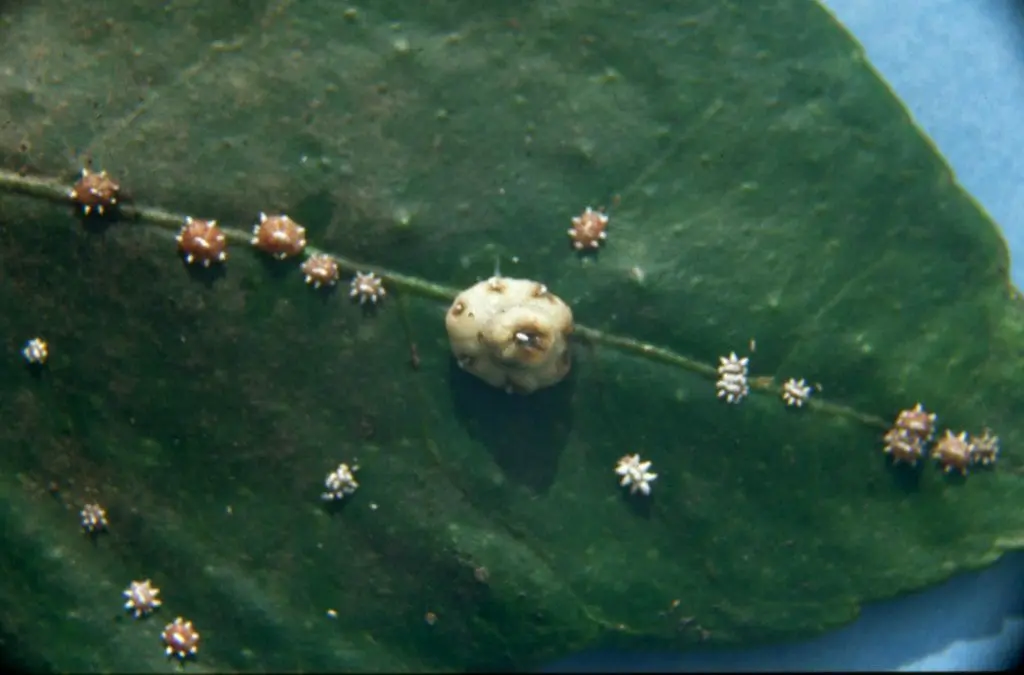Greenhouse thrip
Heliothrips haemorrhoidalis
Feeding by both larval and adult Greenhouse Thrips causes severe damage to avocado leaves and fruit resulting in fruit being downgraded or even rejected for export.
Pupae and larvae (juveniles)
- Juvenile life stages of different thrip species cannot be distinguished from one another in the field by an Avogreen pest monitor.
- Characteristics of GHT juvenile stages are:
- Approximately 1mm in length.
- Pale yellow to whitish with red eyes.
- Larvae carry a greenish red to black globule on the tip of their abdomen.
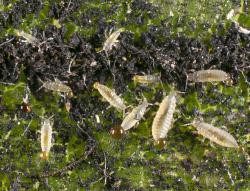
Adult
- Black
- Adults are black with distinctive – light wings held along a dark body, light-coloured legs and generally are slow moving
- Approximately 1-3mm in length
- Juvenile thrips of different species cannot be distinguished from one another
Fruit
Russet or scarring of fruit with/without tarry residue.
Life cycle
- Eggs are inserted into the plant tissue where they are protected from sprays.
- There are two actively feeding larval stages, followed by two non-feeding stages.
- Feeding larvae carry droplets of liquid excrement on the tips of their abdomens. These are a defence against predators, but if not used are deposited where they harden as tarry blobs. They are distinctive of GHT.
- The complete life cycle takes less than 5 weeks under optimum conditions, so that there are a number of generations each year.
- Each stage emerges as follows:
- 17-20 days for egg development
- 13 days for two larval instars
- 5 days for pre-pupal and pupal stages
When and where to monitor
- Monitor for juveniles and adults using a 10x hand lens.
- Prefers shelter therefore found between touching fruit and where fruit touches a branch or leaf, but they spread more widely as population numbers increase.
- Most common in sheltered, shady parts of orchard or tree.
- Leaves become bleached and fresh damage to the fruit appears silvered (prefers fruit to leaves). Ages to a brown russet with or without tarry residue.
- Young and mature fruit are equally susceptible to damage.
- Almost all populations are a mix of life cycles.
- Typically occurs from mid to late summer (February) until the temperature drops in autumn (April) but the actual start and finish varies with season and district due to the climatic effects.
- Pest numbers can increase rapidly when conditions are both warm and moist, but the rate of increase slows when temperatures are below 15 °C or above 30 °C.
- Can be found throughout the season.
- As numbers can increase rapidly under favourable conditions, the interval between monitoring rounds should be short when these conditions are likely and can be lengthened as autumn progresses.
- The pest status can vary quite markedly from season to season due to the strong influence of climate on population levels.
Management of thrips
- If spray is applied and all adult thrips are killed, then eggs that have been laid will be hatching from the following day and up until 20 days.
- Once the egg has hatched there will be another 18 days before the adult stage is reached and ready to lay eggs again.
- It is important to target the timing of control sprays in relation to the life cycle of thrips.
Implications
Greenhouse thrips are a quarantine pest therefore market access restrictions will apply if they are found on fruit in the packhouse.

